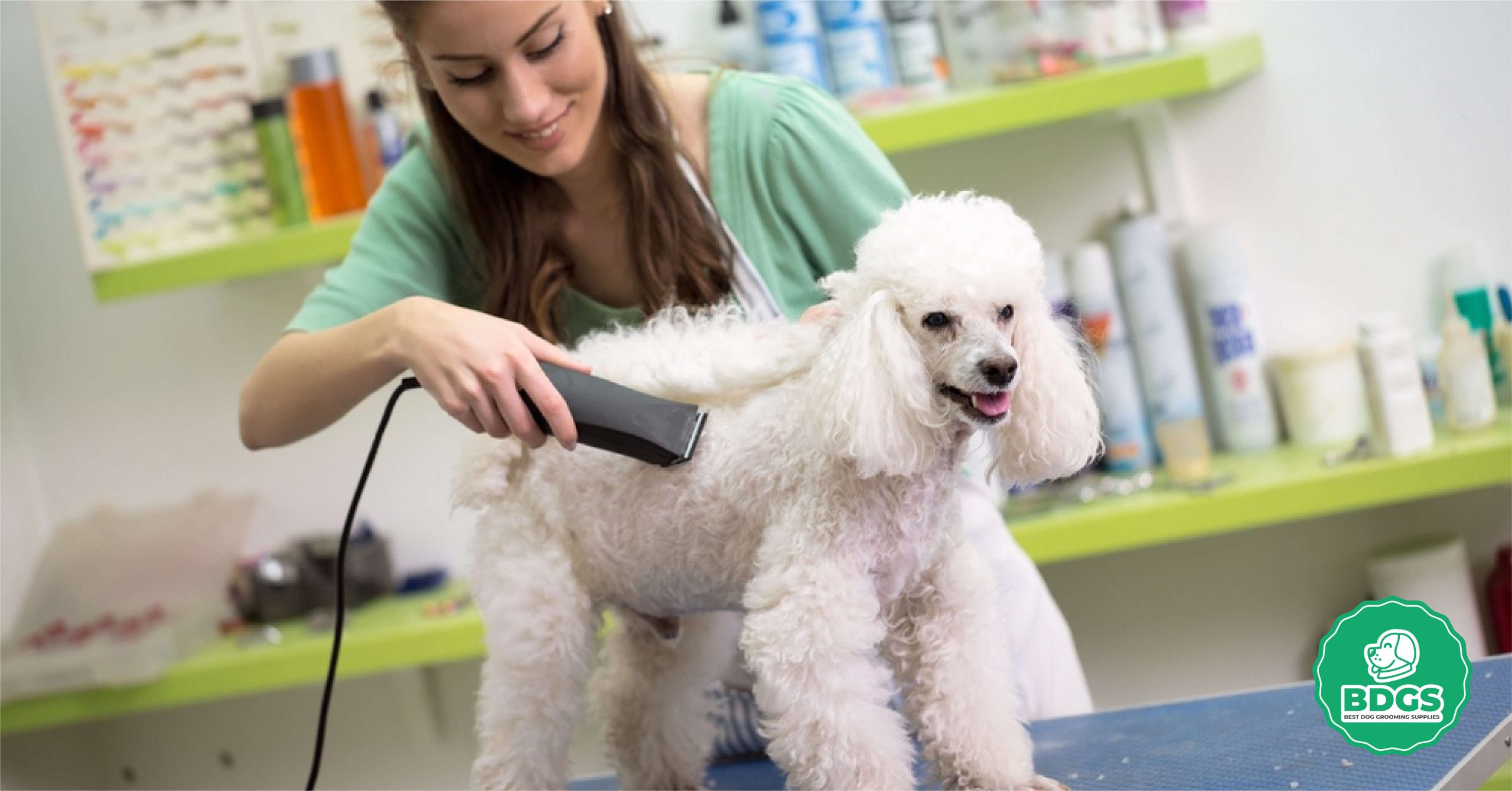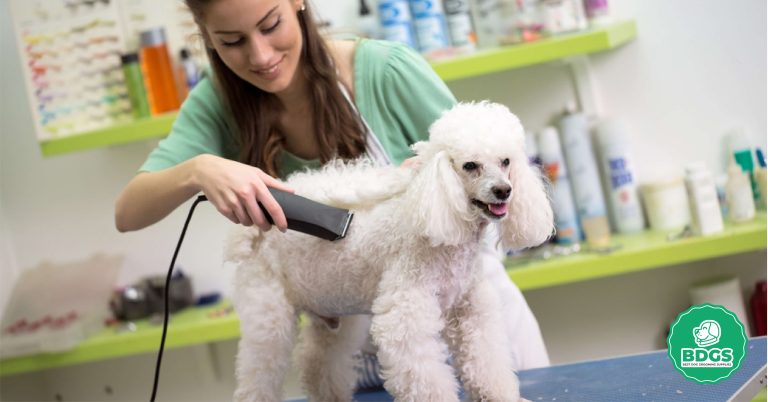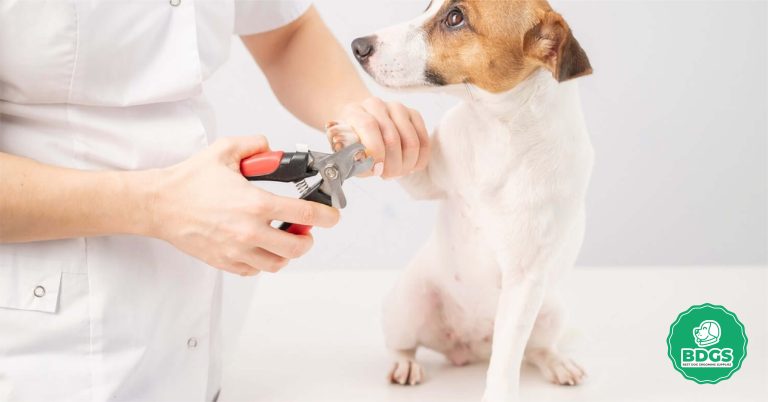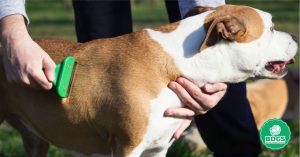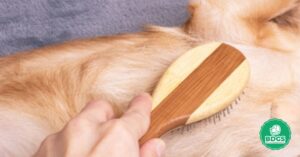What are Dog Grooming Blades
Dog grooming blades are necessary for any pet owner or groomer who desires to maintain the best possible appearance for their furry companions. These specialized blades are designed to trim and shape a dog’s fur, contributing to a neat appearance and enhancing the dog’s health and well-being.
There are a variety of dog grooming blades, each with unique characteristics and benefits. Some blades are designed for specific coat types, such as thick or curly fur, while others are intended for particular grooming tasks, such as ear or paw trimming.
All dog grooming blades are constructed from high-quality materials and designed to be safe and effective for dogs of all sizes and breeds. With consistent use, these blades can help keep your dog’s coat healthy and beautiful while allowing pet and owner bonding.
Factors to Consider While Purchasing Dog Grooming Blades
How much does it cost to dog groom Blade?
The price and value of a dog grooming blade can vary based on various factors, such as its quality, the material it’s made of, and the brand. Generally, depending on the variables above, a high-quality dog grooming blade can cost anywhere from $10 to $50 or more.
It is important to consider the value of the blade, despite the temptation to choose a cheaper option. A less expensive edge may not be as durable or effective, resulting in the need to replace it more often. In contrast, a more expensive blade may provide superior performance and last longer, saving you money in the long run.
Consider the value of a well-groomed dog as well. Regular grooming can enhance your dog’s appearance, comfort, and overall health. Investing in a high-quality blade for dog grooming can help you achieve professional-level results and make the grooming process more enjoyable for you and your furry friend.
What is the type and size of dog clipper Blade?
There are numerous varieties and sizes of dog grooming blades on the market. Here are some of the most frequent types and dimensions:
- Clipper Blades: Clipper blades are available in various sizes, from #3 to #50, with #3 being the longest and #50 the shortest. The length of the blade determines how close to the skin it will cut. Clipper blades are designed to efficiently remove large amounts of hair and are suitable for trimming the body and legs of a dog.
- Scissor Blades: Scissors typically shape and finish a dog’s coat. They are available in various lengths, with longer blades used for body trimming and shorter blades used for facial, paw, and ear trimming.
- Stripping Blades: Hand-stripping a dog’s coat requires stripping blades. These blades are available in various sizes and are equipped with teeth that grab and remove dead hair from the skin. Wire-haired breeds, such as terriers, can benefit from stripping blades.
- Blade Combs: Blade combs are attachments that lengthen the cutting length of clipper blades. They are available in various sizes and are suitable for trimming a dog’s fur to a specific length.
When selecting a blade for dog grooming, it is important to consider the type of grooming you will perform and the length of hair you will need to cut. Additionally, it is essential to ensure that the blade is compatible with the grooming tool or clipper you will be using. Always adhere to the manufacturer’s instructions and exercise caution when using sharp grooming blades to avoid injuring yourself or your pet.
What is the material and durability of a dog clipper Blade?
Blades used for dog grooming are constructed from various materials, including stainless steel, ceramic, and carbon. The material and quality of the manufacturing process determine the durability of a dog grooming blade.
The most common and affordable type of dog grooming blade is stainless steel. It is strong and doesn’t rust or break down easily. With proper care and maintenance, such as regular cleaning and lubrication, stainless steel blades can last long.
Ceramic blades are a popular alternative. They are renowned for their resilience and ability to maintain sharpness longer than stainless steel blades. Ceramic blades are also lightweight and generate less heat during use, reducing the likelihood of your dog being burned.
Carbon blades are the rarest and most expensive type of dog grooming blades. They are made of carbon steel of the highest quality and are renowned for their extreme sharpness and durability. Carbon blades are designed for heavy-duty use and are suitable for professional groomers.
Regardless of the material, it is essential to maintain your dog grooming blade properly to ensure its durability. It includes regular cleaning, oiling, and sharpening. Always adhere to the manufacturer’s care and maintenance instructions to ensure that your dog-grooming blade lasts as long as possible in good condition.
What is the length and teeth spacing of the dog grooming Blade?
A dog grooming blade’s length and tooth spacing can vary based on the blade’s type and intended use. Here are some common dog grooming blade lengths and tooth spacings:
- Clipper Blades: Clipper blades are available in various lengths and tooth spacing, ranging from 1/8 to 1 inch. The blade’s length and tooth spacing determines how close it can cut to the skin and how much hair it can remove. Blades with a closer tooth spacing and shorter length are ideal for trimming a dog’s face and paws, whereas knives with a wider tooth spacing and longer length are ideal for decorating the dog’s body and legs.
- Scissor Blades: The length of scissors blades ranges between 4.5 inches and 9 inches. The size of the blade determines the amount of hair that can be cut at once. Longer blades are ideal for trimming a dog’s body, whereas shorter blades are ideal for trimming the face, ears, and paws.
- Stripping Blades: There are various stripping blade widths and tooth spacings. The blade’s width and tooth spacing determine the amount of hair it can remove. Narrower blades with closer teeth spacing are ideal for hand-stripping small areas of a dog’s coat, whereas wider blades with wider teeth spacing are suitable for larger sizes.
When selecting a blade for dog grooming, consider the task’s optimal length and tooth spacing. It is also important to ensure the blade is compatible with the grooming tool or clipper you will use. To avoid injuring yourself or your pet, always adhere to the manufacturer’s instructions and use caution when using sharp grooming blades.
What is the compatibility with the grooming tool of the dog grooming Blade?
Compatibility between a dog grooming blade and a grooming tool is crucial when selecting a blade. Different dog grooming blades are intended for use with specific grooming tools; therefore, ensuring that the blade you choose is compatible with your grooming tool is essential.
The majority of dog grooming blades are designed for use with clippers, which are commonly used to trim and cut a dog’s hair. Clippers come in various sizes and designs, and selecting a blade that is compatible with your model is essential. Some grooming tool manufacturers design their blades to fit their clippers, while others create their blades to provide various models.
Another common grooming tool for trimming a dog’s hair is scissors. Scissors come in various sizes and designs, and selecting a blade that is compatible with your model is essential. Some scissors’ blades are designed to be interchangeable with different models, while others are brand- or style-specific.
Before purchasing a dog grooming blade, it is essential to check the manufacturer’s instructions or specifications for the blade and the grooming tool to ensure compatibility. Using an incompatible blade with your grooming tool can result in poor performance, damage to the tool or blade, and potential harm to your pet.
What is the ease of use of the dog grooming Blade?
The ease of use of a dog grooming blade depends on several factors, including the blade’s design, the grooming tool’s weight and balance, and the user’s experience and skill. Consider the following factors when evaluating the usability of a dog grooming blade:
- Blade Design: The blade’s design can influence its usability for various grooming tasks. For instance, some blades have a curved or angled shape that makes maneuvering around the contours of a dog’s body easier, while others have a straight condition that may be better suited for trimming consecutive lines. Some blades have features, such as safety guards and detachable combs, that make grooming easier and safer.
- Weight and Balance: A dog grooming blade’s ease of use can also affect the instrument’s weight and balance. Too-heavy or unbalanced grooming tools can cause fatigue or discomfort during extended use, whereas lightweight and well-balanced tools can make grooming easier and more comfortable.
- User Experience: The user’s level of expertise and experience can also impact the practicality of a dog-grooming blade. Expert groomers may find working with various blade designs and styles easier, whereas novice groomers may prefer more straightforward methods.
Consider your experience, skill level, and the blade’s design and compatibility with your grooming tool when selecting a dog grooming blade. Choosing a user-friendly and comfortable blade can make the grooming process more enjoyable and efficient for you and your pet.
Purpose of Dog Grooming Blade
A dog grooming blade is designed to trim, cut, or style a dog’s hair. Grooming blades are available in numerous shapes, sizes, and styles, each designed for a specific function. Here are some common purposes of dog grooming blades:
- Trimming: Trimming blades are designed to remove small amounts of hair and are commonly used to trim a dog’s facial, ear, and paw hair. These blades are typically more compact and have more closely spaced teeth than other grooming blades.
- Cutting: Cutting blades are made to take more hair and are usually used to cut a dog’s hair to a certain length or style. These blades typically have wider tooth spacing and are available in various sizes to accommodate multiple grooming techniques.
- Stripping: The outer layer of a dog’s coat is removed using stripping blades, leaving behind the softer, finer undercoat. These blades are typically employed in hand-stripping, a grooming technique to remove dead hair and encourage healthy coat growth.
- Finishing: Finishing blades are designed to give a dog’s coat a smooth, polished appearance after trimming or cutting. These blades typically have finely spaced teeth and are used to remove any remaining hairs or uneven spots from a dog’s coat.
Overall, a dog grooming blade preserves the health and appearance of a dog’s coat. Regular grooming with the proper blade can prevent matting, reduce shedding, and promote a healthy, glossy coat.
The drawback of Dog Grooming Blade
Even though dog grooming blades are an indispensable tool for maintaining a dog’s coat, there are some disadvantages to consider. Here are some potential disadvantages of using blades for dog grooming:
- Risk of Injury: Using a dog grooming blade improperly or without the necessary precautions can injure the dog. With prolonged use, blades can become overheated and burn the dog’s skin. When grooming sensitive areas around the eyes, ears, and genitalia, groomers must exercise caution.
- Maintenance and Replacement: Blades used for dog grooming require regular cleaning and maintenance to remain sharp and effective. Blades can dull or break over time, necessitating a costly replacement.
- Noise and vibration: Certain dog grooming blades can be extremely loud and produce a great deal of vibration, which can be stressful for some dogs. Selecting a grooming tool with a quiet motor and low vibration is essential to minimize the dog’s discomfort.
- Compatibility: As stated previously, not all blades for dog grooming are compatible with all grooming tools. It can make finding the correct blade for a specific tool difficult and restrict groomers’ options.
Despite these disadvantages, dog grooming blades remain indispensable for maintaining a dog’s coat. By using them carefully and maintaining them properly, groomers can ensure their clients receive the best possible grooming experience.
Conclusion
Grooming blades are essential for maintaining a dog’s coat and overall health. They are available in various types, sizes, and styles, each designed for a particular grooming function.
When selecting a blade for dog grooming, it is essential to consider material and durability, length and teeth spacing, compatibility with grooming tools, and usability. However, as with any grooming tool, dog grooming blades have potential drawbacks, such as the risk of injury, the need for routine maintenance and replacement, noise and vibration, and compatibility concerns.
Overall, dog grooming blades are an indispensable tool for any groomer or dog owner concerned with the dog’s health and appearance. By selecting the appropriate blade for the task and using it correctly, dog owners can maintain the coat and promote the dog’s overall health. With proper care and attention, dog grooming blades can contribute to our furry companions’ happiness, health, and optimal appearance.
Frequently Asked Questions
A #10 blade cuts shorter than a #7 blade in dog trimming. The number on a clipper blade tells you how long a cut it makes. With a #10 blade, the coat gets very short. It is often called a “shave down,” while a #7 blade leaves the skin slightly longer than a #10 blade.
The best clipper blades for trimming a dog depend on your wants and the type of hair on the dog. There are different blades for different coat lengths and thicknesses. Most of the time, a #30 blade is used for clean cuts and cutting paw pads. A #10 blade is used for regular shaving, and a #4 or #5 blade is used to leave a bit more length. The best choice will depend on the cleaning session’s style and needs.
When cleaning a dog safely, it’s less about the blade you use and more about how you do it. Blades with higher numbers, like #10 and #30, are often used on the dog’s stomach and paws, which are better places to cut. But any blade can be safe if it is used the right way and with care. Always put the dog’s health and well-being first, and be careful not to nick or cut the skin.
A #7 blade is often used to trim and blend certain parts of a dog’s body when grooming. It gives the coat a length of about 1/8 inch (3.2 mm). Groomers often use the #7 blade to clean up the area around the belly and behind, making the animal look nice and tidy. It is also used on some dog types to make short spots that are partially cut.
Sharpening the blades on dog clippers is an exact job that requires the right tools and methods. Here is a step-by-step guide to sharpening the blades on dog clippers:
What You’ll Need:
A tool for clipper blades or a polishing kit
a screwdriver if you need to take the edges off.
A fluid for cleaning or a blade wash
Soft fabric
Gloves for safety
Oil for clipper blades
Steps:
Prepare the Blades: If the blades on your scissors can be removed, do that first. Carefully take them apart with a screwdriver.
Clean the Blades: To get rid of hair, dirt, and other things stuck on the blades, use a blade cleaning solution or blade wash. Clean them well to make sure they can be sharpened properly.
Check the Blades: Look at the blades to see if you can see any damage, nicks, or odd lines. If there are significant problems, the blades need to be fixed by a professional.
Choose the Right Sharpener: Choose a sharpener or sharpening kit that is right for your type of clipper blade. You can use sharpening stones by hand, automatic sharpeners, and specific kits.
Follow the Instructions: Please read the directions with your chosen sharpening tool and do what they say. There may be different rules and steps for each tool.
Start Sharpening: Start sharpening by holding the blade at the right angle (usually around 30 degrees) and moving it in controlled steps along the sharpening stone if you use a hand sharpener. Do this on both sides of the knife blade.
Check for Sharpness: After each pass on the sharpening stone, lightly touch the blade’s edge to see if it is sharp. If it isn’t strong enough, keep polishing it until it has your desired advantage.
Balance the Blades: Make sure that both blades in a pair are sharpened the same amount to stay balanced and cut evenly. If one blade is sharper than the other, the effects may not be the same.
Test the Blades: Once the blades are as sharp as you want, put them back on the cutter. Start the clippers and let them run to see how well the blades cut.
Apply Clipper Blade Oil: Put a little clipper blade oil on the blades before you use the clippers on a dog. It helps make sure everything works smoothly and cuts down on friction.

